Berta de Pablos-Barbier will replace Alexander Lacik at the start of January, two months earlier than expected.
What retailers should know about the chip card switch
With the deadline approaching for retailers to switch their credit card readers to accept the new EMV chip cards, National Jeweler speaks with one expert about what retailers need to do to prepare.

New York--After the many security breaches that plagued a number of large retailers in the holiday season and throughout the winter months, a switch is being made that aims to give consumers better protection against counterfeit fraud.
A new type of credit card is being issued across the country, equipped with chips that are much harder to counterfeit than the credit cards with magnetic strips on the back that currently are in the market.
The nationwide shift to using EMV--which stands for Europay, MasterCard and Visa--cards is well underway. Many credit card issuers have already begun making the switch, and Bob Legters, senior vice president of payment products at banking and payment technology provider FIS Global, said that there are several hundred thousand cards in the market already, if not millions.
For retailers, the big key is the October deadline--after the end of the month, if they don’t have the technology to accept the new chip cards, the liability for fraud lies with them. For jewelry retailers, who have higher tickets than the average retailer, this could be a major problem.
“Counterfeit fraud typically targets the highest dollar transaction that you can get away with, so if a jewelry store is taking cards, this is a huge potential risk after October if they’re not equipped because the losses could be great,” Legters said.
National Jeweler spoke with him further about what the change means for retailers and how they should be preparing for it in their store.
National Jeweler: What are these new chip cards and what’s different about them?
Bob Legters: The new chip card is called EMV, which actually stands for Europay, MasterCard and Visa. It was introduced originally in foreign countries where the communication system struggled, and so what had to happen was that if you couldn’t connect to a network and authorize a card, there had to be a way for the card to work independently. The chip contains all of the information from the card--it keeps the current balance and all of the parameter settings and details about the consumer.
One of the very important byproducts of that is that the chip itself is an encrypted chip that’s very secure, so unlike the magstripe that’s on the back of most of our plastics, the chip offers an additional layer of security in addition to the normal security that comes with a
NJ: Will most of the credit card issuers make the switch?
BL: There are several hundred thousand cards in the market already, if not millions, and the estimates right now are that almost everybody that has a card in their wallet will be carrying an EMV card over the next 36 months. What most are doing is, as cards expire, they’re replacing them with new chip cards, so it’s a migration to be sure, but we are seeing some issuers who are just wholesale reissuing all of their plastics and sending out all new plastics to all of their customers all at the same time, versus waiting to do it when their cards expire. That’s expensive for the issuer but the potential is to reduce fraud. While the focus internationally and in the early days might’ve been poor communication networks, the focus here domestically has everything to do with fraud and security.
NJ: Why is the switch to these types of cards being made?
BL: The United States market has held off on this for quite some time, until the brands--Visa and MasterCard--mandated it. Now we have our October date for the majority of retailers, which is a date when something very significant happens: it’s a shift from the bank to the retailer for liability of fraud. So the driving purpose for everyone to participate in this is that shift in liability. In today’s world, the regulations associated with Visa and MasterCard provide protection for the consumer and for the retailer in that the issuer of the card--the bank--is responsible for any fraud that takes place, as long as they follow certain guidelines. The issuer of the card has the choice; they don’t have to offer a card with a chip in it. But if they do, they get the benefit of more security for their consumer. In the event that a retailer is not using an EMV terminal that’s able to accept a chip card and there’s fraud, then the retailer has to take the loss. That should be significant for (retail jewelers) because obviously the average ticket price in the jewelry space is a lot higher than the average ticket price in, let’s say, the quick service restaurant or the small convenience store.
What we’re seeing is, especially in the area of higher ticket items, the chip prevents the type of fraud we call counterfeit fraud. That’s where I get your number, manufacture a fake card, and when I come into the store, I’ve got a card with my name on it that matches my ID but really it’s swiping your information. It looks like I’m me but I’m actually counterfeiting myself as you. The chip eliminates that because even if I steal all of your information, I cannot create a chip. There’s a lot of technology behind that, but really what it does is allows for an encrypted image of the consumer to be protected against counterfeiting.
NJ: What is the deadline for retailers to switch to accept the new cards?
BL: October is the first major shift. There are some specific industries that are delayed like fuel pumps and things like that, but for the most part, (retailers) will have a liability switch if they aren’t able to accept chip cards after October 31.
If they’re not equipped by then, they will have to accept the liability--only in the case where the consumer has a chip card and they can’t accept it. If somebody comes in without a chip card, that’s not going to change anything.
NJ: What exactly has to be done on the retailer’s side to make the switch?
BL: The change for retailers isn’t as much about the point-of-sale system as much as it is their card reader. If the retailer has a POS system and they’re working with their merchant processor--they’re probably using a VeriFone or Ingenico terminal or something like that--those providers have alternatives that are chip readers as well. This happens to come at a good time because updating the terminals to accept the chip cards also allows them to update the terminals to accept NFC (near field communication), which is used for Apple Pay and Samsung Pay. The POS might be a little more complex than just the terminal that accepts the payment, and in many cases it’ll just be an equipment upgrade.
NJ: Are there any problems or challenges that retailers might encounter along the way?
BL: The only problem or challenge that the retailer has to face is that both the consumer and the cashier are going to be experiencing a new thing. We spent the last 20 years teaching people how to use a credit card and teaching people behind the counter how to take a credit card. Now that experience is going to change, because instead of me walking up the counter, taking my credit card and swiping it or handing it over and someone keying it in, it’s going to have to be inserted and it’s going to clamp down. The terminals walk you through it, but it’s going to be a little “human clunky” for a while. So the most important thing is training your staff, making sure that you use it and get used to how it works.
The Latest
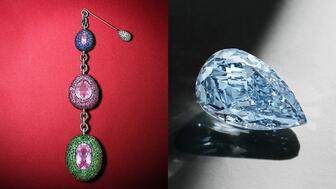
Sotheby’s held its first two jewelry sales at the Breuer building last week, and they totaled nearly $44 million.

Winners will receive free registration and lodging for its fourth annual event in Detroit.

How Jewelers of America’s 20 Under 40 are leading to ensure a brighter future for the jewelry industry.

Here are six ideas for making more engaging content for Instagram Reels and TikTok, courtesy of Duvall O’Steen and Jen Cullen Williams.


The honorees include a notable jewelry brand, an industry veteran, and an independent retailer.

Carlos Jose Hernandez and Joshua Zuazo were sentenced to life without the possibility of parole in the 2024 murder of Hussein “Sam” Murray.

Roseco’s 704-page catalog showcases new lab-grown diamonds, findings, tools & more—available in print or interactive digital editions.

Yood will serve alongside Eduard Stefanescu, the sustainability manager for C.Hafner, a precious metals refiner in Germany.

The New Orleans jeweler is also hosting pop-up jewelry boutiques in New York City and Dallas.

Set in a Tiffany & Co. necklace, it sold for $4.2 million, the highest price and price per carat paid for a Paraíba tourmaline at auction.

The jeweler’s “Deep Freeze” display showcases its iconic jewelry designs frozen in a vintage icebox.
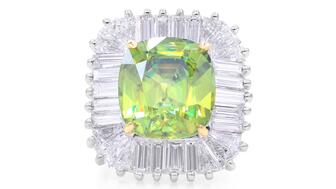
Take luxury gifting to new heights this holiday season with the jeweler’s showstopping 12-carat sphene ring.

This year's theme is “Unveiling the Depths of the Ocean.”

In its annual report, Pinterest noted an increase in searches for brooches, heirloom jewelry, and ‘80s luxury.

Starting Jan. 1, customers can request the service for opal, peridot, and demantoid garnet.

The 111-year-old retailer celebrated the opening of its new location in Salem, New Hampshire, which is its third store in the state.
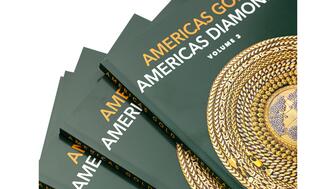
The new catalog features its most popular chains as well as new styles.
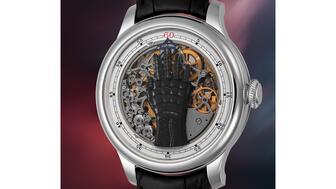
The filmmaker’s personal F.P. Journe “FFC” prototype was the star of Phillips’ recent record-setting watch auction in New York.

The new location in the Design District pays homage to Miami’s Art Deco heritage and its connection to the ocean.

Inflations, tariffs, and politics—including the government shutdown—were among consumers’ top concerns last month.
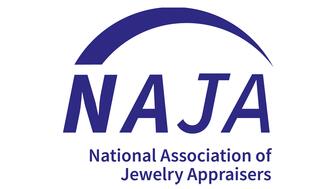
“Longtime favorite” presenters, as well as first-time speakers, will lead talks and workshops at the annual event in Tucson next year.
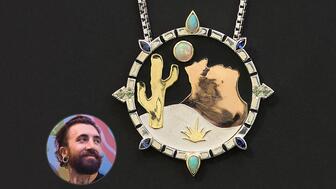
Silas Smith of Meridian Metalworks won the challenge with his pendant that blends Australian and American landscapes.

The sale of the 31.68-carat, sunset-hued stone was part of Sotheby’s first series of events and auctions in Abu Dhabi.

Most customers who walk into your store this month have made up their minds. Your job is to validate their choice, Emmanuel Raheb writes.

The collection features characters and motifs from Ukrainian folklore, including an enchanted mirror and a magic egg.

MatrixGold 3.11, the newest version of the jewelry design program, offers more flexibility, precision, and creative control.


























